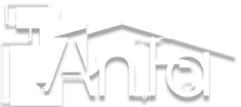All drains are not created equal. However, sanitary and storm drain sewers are two interconnected systems used by the City of Toronto to transport your waste water. In this post, we discuss the difference between sanitary and storm sewers to help you understand their functions better.
Functions of Sanitary Sewer & Storm Drain
Many states in Canada are working towards eliminating sewage overflows by 2050, and part of that is to ensure that all combined sewer systems be separated by separate sewer and storm drain systems. Combined systems combine wastewater and stormwater runoff, which can overwhelm the pipes during heavy storms.
Sanitary Sewers: The sanitary sewer transports sewage from kitchen sinks and bathrooms to a wastewater treatment plant. Wastewater leaves a home and connects to a discharge point, which in turn is connected to the city's sewer system. Force mains are some of the pipes used in a sanitary system, and they use pressure to pump out wastewater to treatment plants for sanitation before it is released into Lake Ontario.
Storm Drain: The storm drain handles the runoff from heavy rainfalls and flooding. This system does not handle sewage. The untreated water is carried via open ditches or underground pipes to nearby surface water bodies, such as streams and rivers. In low-lying areas, the inlets can be found in curbs, while older buildings usually have floor drains in the basement which connect to a storm sewer system.
City of Toronto Storm Drain & Sanitary Sewer Maintenance
The city of Toronto works with City of Toronto licenced plumbers, such as Anta Plumbing to, run a scheduled maintenance program, which ensures that all the sewers in the system comply with the by-laws that have been set forth in the Municipal Code, and that they operate as they should. An annual maintenance schedule consists of naturalization and reconstruction to take care of necessary repairs.
Sanitary Sewer and Storm Drain Maintenance
As a homeowner, you are responsible for all pipes on the home side of your water meter, which is why it is important to be cautious of what enters your storm drain and sanitary sewer system. No foreign objects should ever enter the system. Sewer systems should not be used to dispose of cooking fats and diapers or toys.
The City of Toronto also recommends that homeowners help prevent pollution of Lake Ontario and the watercourses by not draining their swimming pools onto the roadways and preventing soapy water from washing cars to run onto the road and into catch basins. Only snowmelt and rainwater should enter the catch basins.
Now that you have a good idea of what the difference is between storm drains and sanitary sewers, it is easier to understand the delicate nature of our rapidly reducing fresh water supplies. If you need assistance with your storm drains and sanitary sewers, and you prefer dealing with a plumbing company that cares about your home and our shared environment, look no further than Anta Plumbing. Our City of Toronto Licensed plumbers can quickly assess the cause of any sewer backups, and offer a range of drain services to get your system operational in no time.



